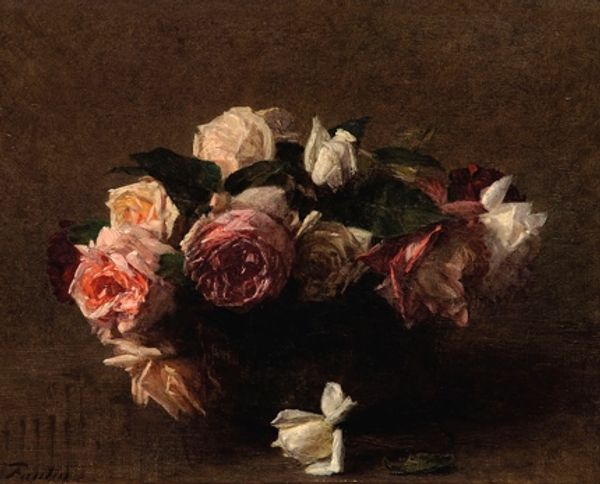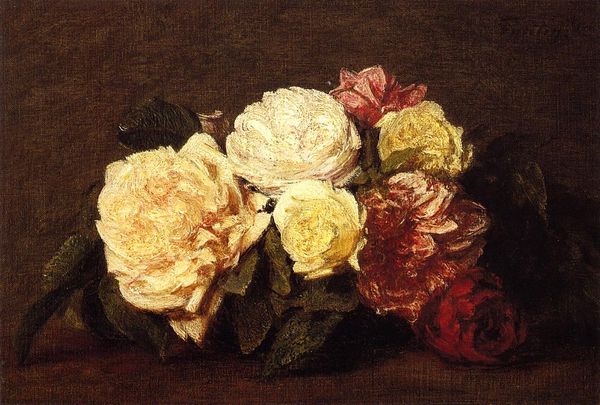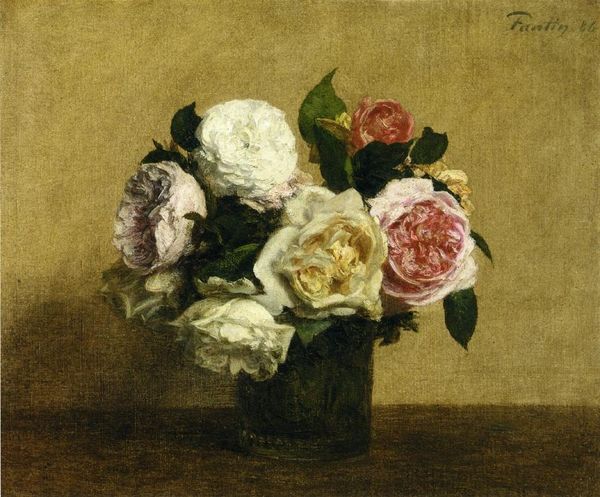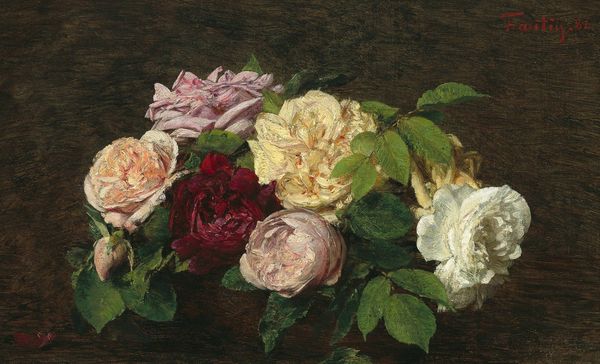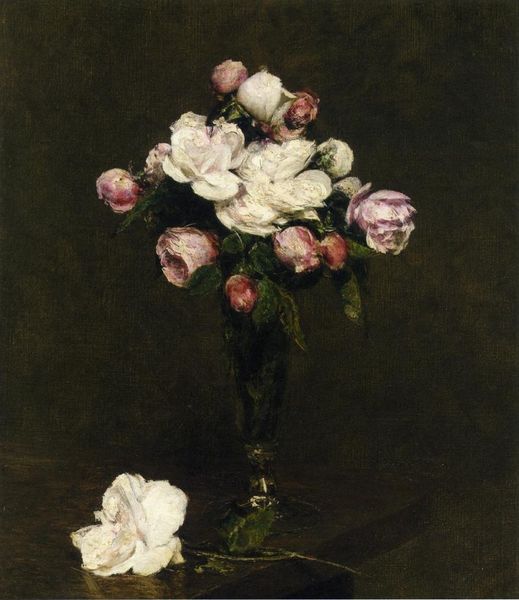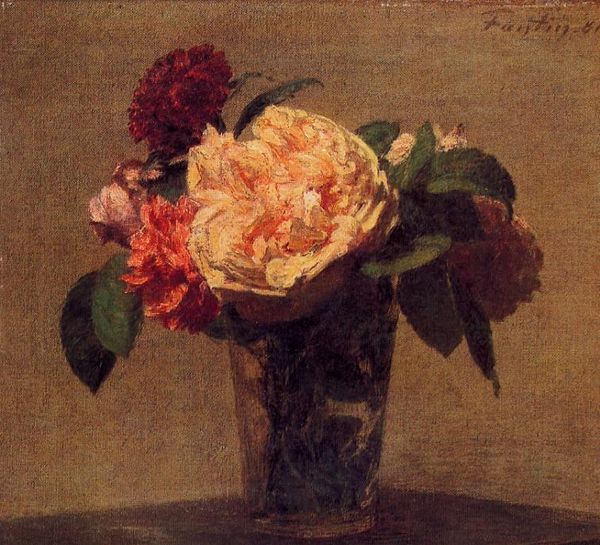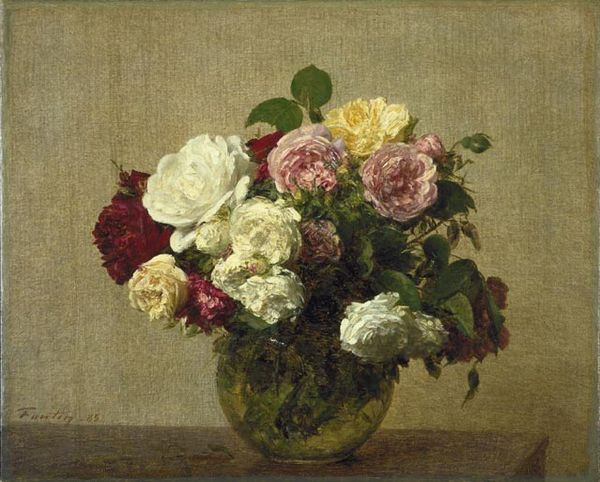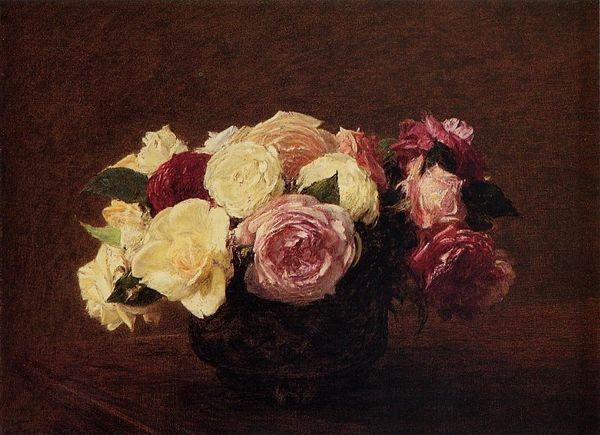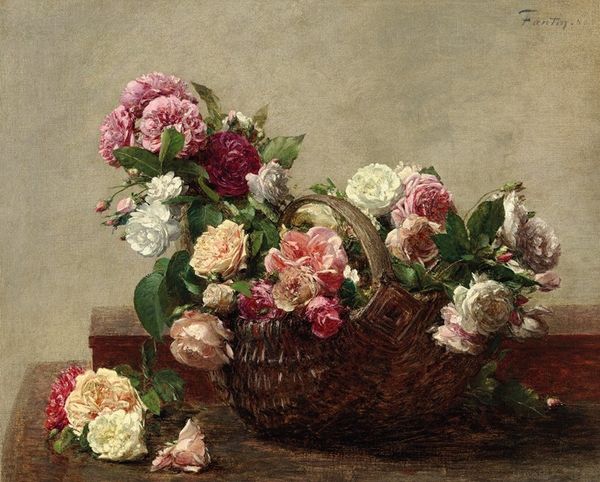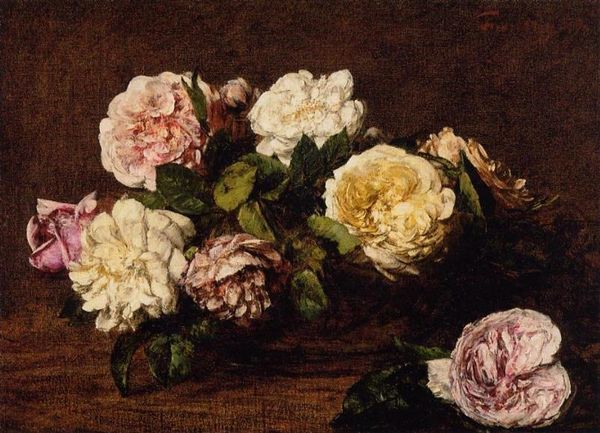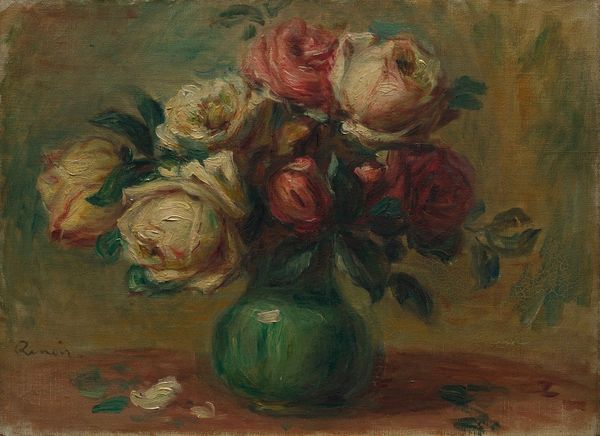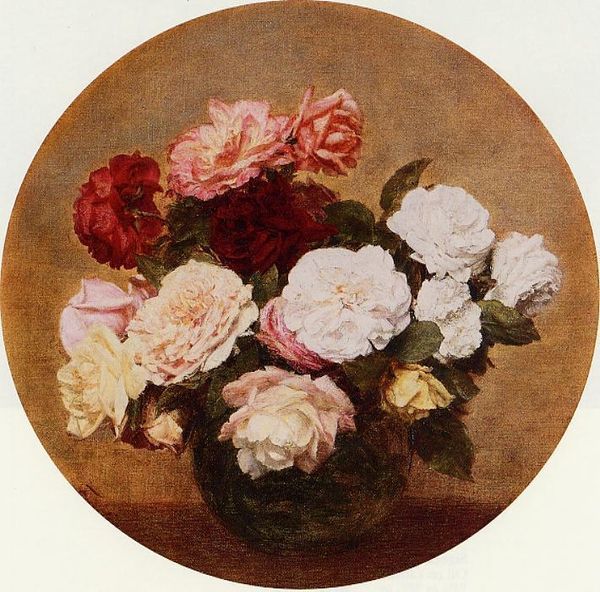
Copyright: Public Domain: Artvee
Curator: Henri Fantin-Latour's "Roses in a Bowl," painted in 1883, showcases the artist’s exquisite attention to detail through oil paint on canvas. Editor: My first impression is one of gentle melancholy. The muted palette and soft brushstrokes evoke a feeling of quiet contemplation. It's not overtly joyful, but subtly, profoundly beautiful. Curator: It's fascinating how Fantin-Latour cultivated such an appreciation for the everyday object, elevating it to the realm of high art. Consider the crafting process of the painting, he did not treat the rose merely as an imitation of nature but as material that invites an appreciation for its production process. The selection of blooms, the composition in the bowl – it's a meticulously arranged performance of skill. Editor: The choice of roses specifically, connects with long standing traditions of flower painting. Roses symbolize beauty, love, and sometimes, loss and transience. We cannot detach the artist’s interest in these ephemeral items, flowers whose availability changed rapidly with season. How can we talk about representation of time through still life painting? What are the labor implications? Curator: That's a good point! Let's consider that by this period, industrial capitalism was well entrenched. Even flowers became commodities available in Parisian markets. Does painting them become an act of resistance against industrialized aesthetic and valorizing craft? We can see the painting becomes the subject as Fantin-Latour layers paint and highlights the delicate craft of painting these blossoms Editor: Perhaps the subtle tonal shifts mirror the nuanced experiences of women in late 19th-century society as they grapple with identity, constrained by gender norms yet beginning to express a quiet assertion? Considering the Pre-Raphaelite movement at the time, what does the choice of medium – the lusciousness of oil paint on canvas, say about the cultural values assigned to fine arts, vs more feminized craft media such as textile? Curator: It's a fascinating perspective, and those tensions undoubtedly add layers of meaning. Viewing this work prompts considering how even seemingly simple still lifes can hold multitudes if we consider the material and cultural conditions surrounding the creation of art. Editor: Precisely. "Roses in a Bowl" provides fertile ground to further understanding, it shows us that still life does not only stand still in time but asks us to observe change.
Comments
No comments
Be the first to comment and join the conversation on the ultimate creative platform.
